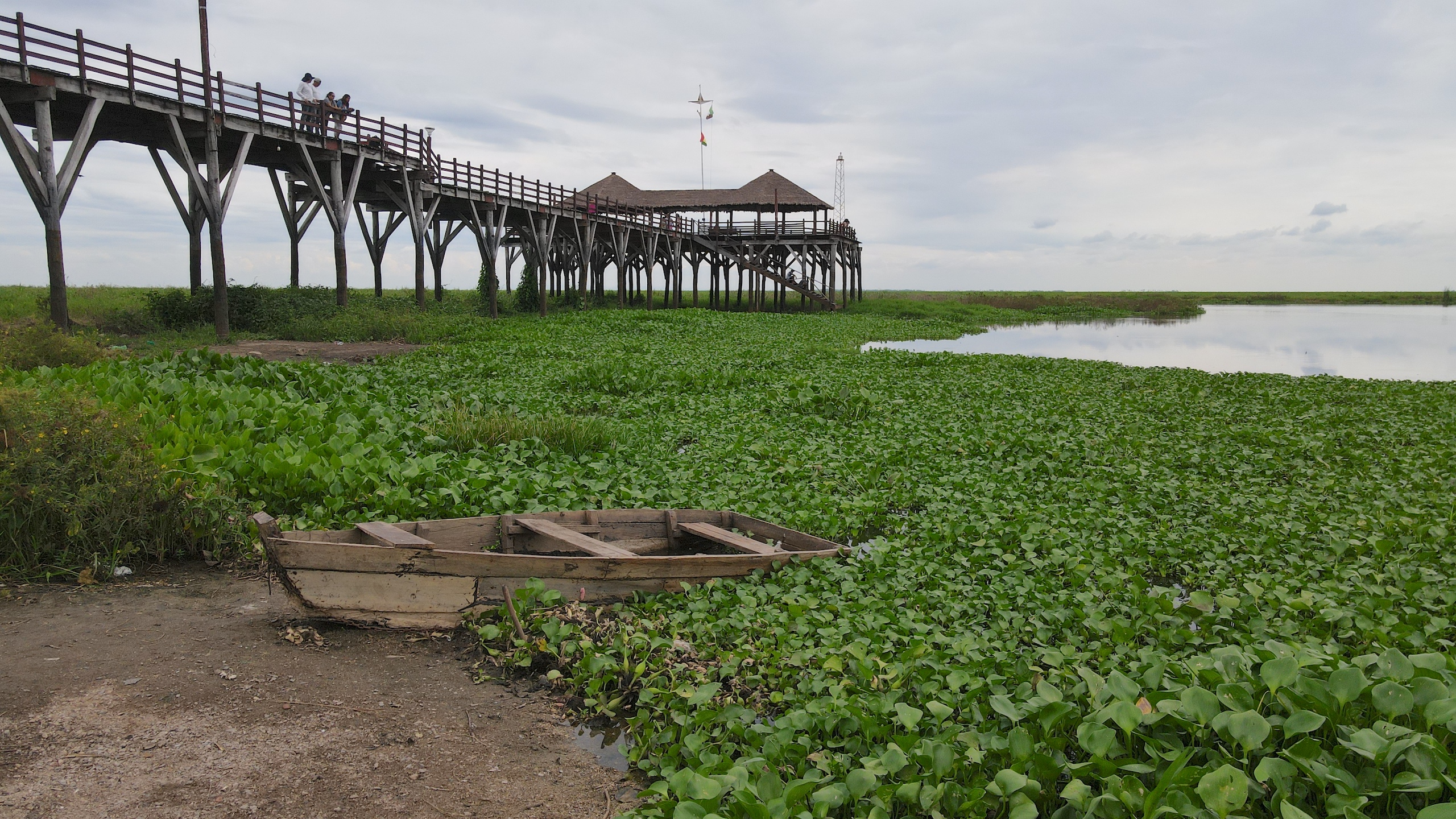Latin America
Related: About this forumIn Bolivia, a new industry dawns in the threatened Pantanal wetlands
A joint Bolivian-Chinese project to exploit huge iron ore reserves could boost the economy, but concerns are being raised over its disruption to ecosystems

Construction of the Mutún steel complex in eastern Bolivia. For six decades, the country has targeted a steel industry to make use of the area’s 40 billion tonne iron ore reserves. (Image: La Región)
Rocío Lloret Céspedes
May 24, 2024
In the middle of the Bolivian portion of the Pantanal wetlands lies one of the largest iron ore deposits in the world: the Mutún. A hilly range with a mineralised surface area of 75 square kilometres, its reserves include 40 billion tonnes of iron – or just over 20% of global availability – and 10 million tonnes of manganese. For several decades, this untapped resource has been seen as the hope for Bolivia’s development. But its current situation is leaving surrounding communities, as well as biologists and conservationists, worried.
In the middle of the Bolivian portion of the Pantanal wetlands lies one of the largest iron ore deposits in the world: the Mutún. A hilly range with a mineralised surface area of 75 square kilometres, its reserves include 40 billion tonnes of iron – or just over 20% of global availability – and 10 million tonnes of manganese. For several decades, this untapped resource has been seen as the hope for Bolivia’s development. But its current situation is leaving surrounding communities, as well as biologists and conservationists, worried.
The idea of building a steel plant in the area was conceived sixty years ago, Jorge Alvarado Rivas, the current president of the state-owned Empresa Siderúrgica del Mutún (ESM), told Dialogue Earth. But only in 2006 did a bidding process come to fruition.
After a year of negotiations, the Indian firm Jindal Steel and Power Ltd was awarded the 40-year contract to exploit and convert the iron into steel, in a risk-sharing deal with the Bolivian government. The company promised to invest USD 2.1 billion in the project, but subsequently withdrew from the country in 2012, citing repeated fines imposed by the government of then-president Evo Morales for alleged breach of contract.
Though that was Jindal’s official reason for its exit, María Renée Barrancos, a biologist who worked in the environmental department of the Puerto Quijarro municipality at the time, says there were other factors leading to the company breaking the contract. In meetings with the department, the company indicated their intention to use water from the Cáceres Lake in Pantanal to wash the ore, she claims. “They said that there was enough flow to use 5 million cubic litres of water per hour and that, in compensation, they were going to build treatment plants for this water for the two municipalities,” says Barrancos, referring to Puerto Suárez and Puerto Quijarro. She helped lead the local population’s resistance to the company’s manoeuvres.
At the time, the lagoon was a natural body of water eight kilometres long and six kilometres wide, with a depth of roughly five metres, a report noted. In 2021, the municipality of Puerto Suárez declared a disaster due to the drought in the lagoon, having registered a 76% decrease in its size over three decades.

The Cáceres Lake, in the Bolivian Pantanal, has shrunk in area by 76% in the last three decades. The lake has been proposed as a source for water to wash the iron extracted from the area. (Image: La Región)
. . .

A hyacinth macaw rests in a tree in the Bolivian Pantanal. This ecosystem of lakes, marshes, rivers, wetlands and forests is key to the region’s water cycle. (Image: Ondrej Prosicky / Alamy)
More:
https://dialogue.earth/en/business/in-bolivia-a-new-industry-dawns-in-the-threatened-pantanal-wetlands/